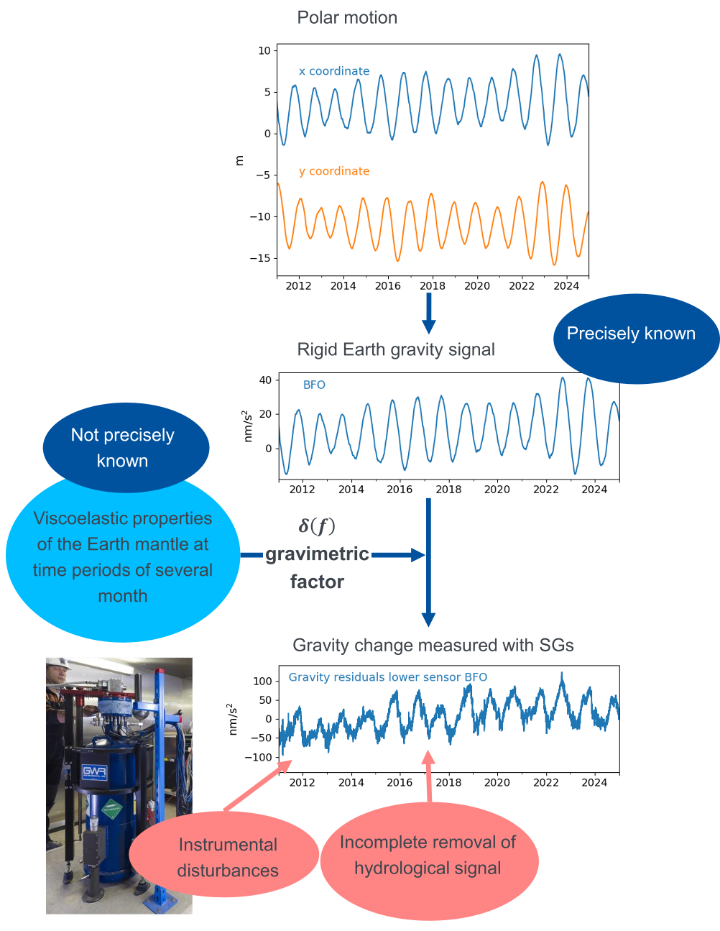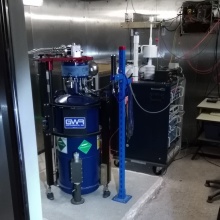The axis of rotation is not fixed inside the Earth but slightly moving. In other words, the geographic north and south poles are not fixed but moving with an amplitude of a few meters. The two main periods of this movement are one year and 430 days (upper part of Figure). This so-called polar motion changes the centrifugal acceleration and deforms the Earth. Both can be measured with superconducting gravimeters (SGs), instruments that can measure small time variations in gravity. For a rigid Earth, we would only measure the change in centrifugal acceleration, which can be precisely calculated from accurate pole coordinates. For the location of the SG at Black Forest Observatory (BFO) the rigid Earth gravity signal of polar motion can be seen in Figure below. However, as the Earth is not rigid, it deforms due to the change in centrifugal acceleration. First, this changes the distance between the gravimeter and the Earth’s center of mass and therefore changes the measured gravity value. Second, the deformed Earth has a different gravity field than the undeformed one. These two effects are about ten times smaller than the change in centrifugal acceleration, and they depend on the viscoelastic properties of the inner Earth at the dominant frequencies of polar motion.

The total effect of polar motion on gravity can be expressed as a product of the change in centrifugal acceleration and a frequency-dependent complex gravimetric factor. Measuring the gravimetric factor yields more insight into the viscoelastic properties of the Earth's mantle at periods of several months (Figure).
Various authors have investigated the determination of the gravimetric factor of the Chandler wobble from a long-time series of SG measurements. However, the uncertainties and discrepancies between these studies are still too big to conclude about the viscosity of the Earth's mantle at these frequencies. We think the two main reasons for these uncertainties are instrumental disturbances of SGs and the incomplete removal of other signals for example hydrology (Figure). At BFO and GIS, we work on quantifying the uncertainty of the gravimetric factor introduced by instrumental disturbances on one hand and uncertainties in models of other gravity effects like hydrology on the other hand. The aim is to find out what is needed for a more accurate determination of the gravimetric factor of the Chandler wobble with gravimeters.

Clara Beck
M.Sc.Scientific Employee


